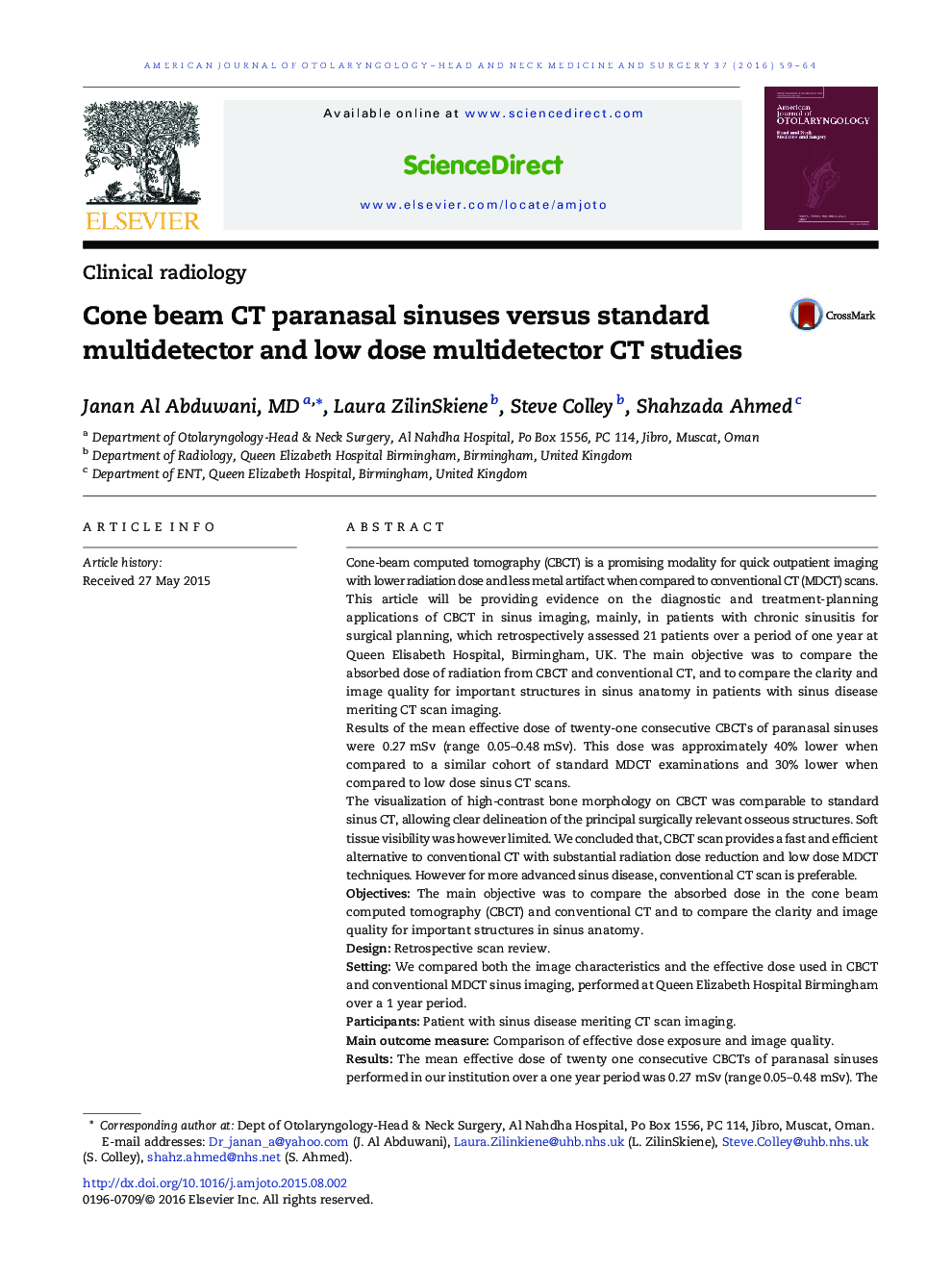| Article ID | Journal | Published Year | Pages | File Type |
|---|---|---|---|---|
| 4103105 | American Journal of Otolaryngology | 2016 | 6 Pages |
Cone-beam computed tomography (CBCT) is a promising modality for quick outpatient imaging with lower radiation dose and less metal artifact when compared to conventional CT (MDCT) scans.This article will be providing evidence on the diagnostic and treatment-planning applications of CBCT in sinus imaging, mainly, in patients with chronic sinusitis for surgical planning, which retrospectively assessed 21 patients over a period of one year at Queen Elisabeth Hospital, Birmingham, UK. The main objective was to compare the absorbed dose of radiation from CBCT and conventional CT, and to compare the clarity and image quality for important structures in sinus anatomy in patients with sinus disease meriting CT scan imaging.Results of the mean effective dose of twenty-one consecutive CBCTs of paranasal sinuses were 0.27 mSv (range 0.05–0.48 mSv). This dose was approximately 40% lower when compared to a similar cohort of standard MDCT examinations and 30% lower when compared to low dose sinus CT scans.The visualization of high-contrast bone morphology on CBCT was comparable to standard sinus CT, allowing clear delineation of the principal surgically relevant osseous structures. Soft tissue visibility was however limited. We concluded that, CBCT scan provides a fast and efficient alternative to conventional CT with substantial radiation dose reduction and low dose MDCT techniques. However for more advanced sinus disease, conventional CT scan is preferable.ObjectivesThe main objective was to compare the absorbed dose in the cone beam computed tomography (CBCT) and conventional CT and to compare the clarity and image quality for important structures in sinus anatomy.DesignRetrospective scan review.SettingWe compared both the image characteristics and the effective dose used in CBCT and conventional MDCT sinus imaging, performed at Queen Elizabeth Hospital Birmingham over a 1 year period.ParticipantsPatient with sinus disease meriting CT scan imaging.Main outcome measureComparison of effective dose exposure and image quality.ResultsThe mean effective dose of twenty one consecutive CBCTs of paranasal sinuses performed in our institution over a one year period was 0.27 mSv (range 0.05–0.48 mSv). The dose was approximately 40% lower when compared to a similar cohort of standard MDCT examinations and 30% lower when compared to low dose sinus CT scans.The visualization of high-contrast bone morphology on CBCT was comparable to standard sinus CT, allowing clear delineation of the principal surgically relevant osseous structures. Soft tissue visibility was however limited.ConclusionCone beam CT scan is a quick and efficient alternative to conventional CT with substantial radiation dose reduction over conventional and low dose MDCT techniques. However for more advanced sinus disease, conventional CT scan is preferable.
